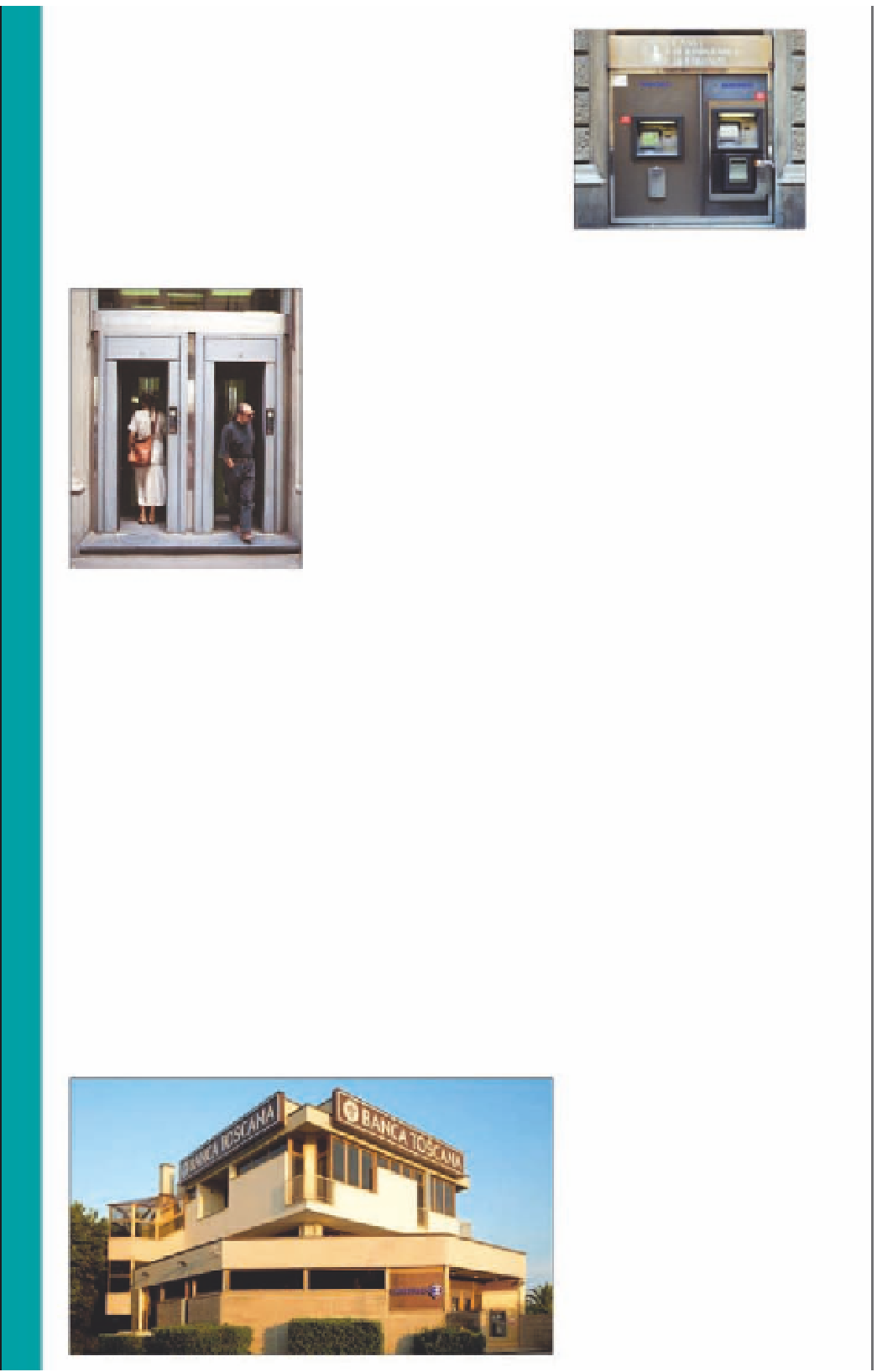Travel Reference
In-Depth Information
Banking and Currency
Visitors to Tuscany have a number of options available
to them for changing money. Banks and ATMs tend to
give more favourable rates than bureaux de change,
hotels and travel agents, but the paperwork when using
a bank is usually more time consuming. When
changing money you will need to show some form of
identification, such as a passport. Alternatively, credit
cards can be used for purchasing goods. Traveller's
cheques are no longer frequently used.
A typical ATM point in the
centre of Florence
To change money at a bank,
bring your passport and be
prepared to fill out numerous
forms. As procedures vary
from branch to branch, it may
be worth asking staff for help.
For security reasons, most
Italian banks have electronic
double doors. Press the but-
ton to open the outer door,
then wait for it to close beh-
ind you. The inner door then
opens automatically. Metal
objects may set off emergency
detectors as you enter. You
may be asked to deposit your
belongings in lockers outside
the secured area.
you need to make a larger
cash payment you should
plan ahead and make with-
drawals from cash machines
over more than one day.
Before your trip, be sure to
tell your bank that you are
travelling to Italy. They
should remove any flags or
limits on your bank and credit
cards to avoid having them
blocked. Ask your bank if
you need a different PIN
number for use in Italy: if you
have a 6-digit PIN it may not
work, as Italian ATMs usually
accept 4- or 5-digit PINs only.
Entering and leaving a bank
through an electronic double door
BANKS AND BUREAUX
DE CHANGE
CREDIT CARDS AND
TRAVELLER'S CHEQUES
ATMS
Banks usually open between
8:30am and 1:20pm Mon-Fri.
Most branches also open for
an hour or so in the afternoon
from about 2:45pm till 4pm.
They close at weekends and
on public holidays
(see p37)
.
Exchange offices stay open
longer, but in general the
rates are less favourable.
In Florence, the exchange
office behind the railway
station is open from 8am till
late evening, depending on
the season. In Pisa, the
exchange offices in Piazza del
Duomo and at the railway
station are open until the
evening and at weekends.
The most convenient way to
access your cash in Italy is to
make withdrawals using an
ATM. To avoid complications,
check which cards the ATM
accepts before inserting your
card. Travelling with more
than one debit (and credit)
card is recommended in case
one is not accepted. Most
ATM machines accept VISA or
MasterCard for cash advances,
but be aware that interest is
payable as soon as the money
is withdrawn.
Italian ATMs dispense a
maximum daily amount
(approximately €300), so if
Credit cards are widely
accepted throughout Italy,
and it is worth bringing one,
or more, with you. VISA and
MasterCard are the most
popular, while American
Express and Diners Card are
rarely accepted. To avoid
problems using your card
during a trip you should
inform your credit card
company before travelling.
Some restaurants, cafés and
shops may require a mini-
mum expenditure to accept
credit card payment. Be
aware that petrol stations do
not accept credit cards, only
cash. Always make sure you
have some cash in case your
credit card is not accepted.
Traveller's cheques are no
longer in common use. Few
stores will accept them (or
even know what they are)
although hotels may accept
them for payment or
exchange. If a bureau de
change does accept traveller's
cheques, be aware that there
is a minimum commission
charge, which may make
changing small sums of
money uneconomical.
A branch of Banca Toscana, seen widely across the region






































